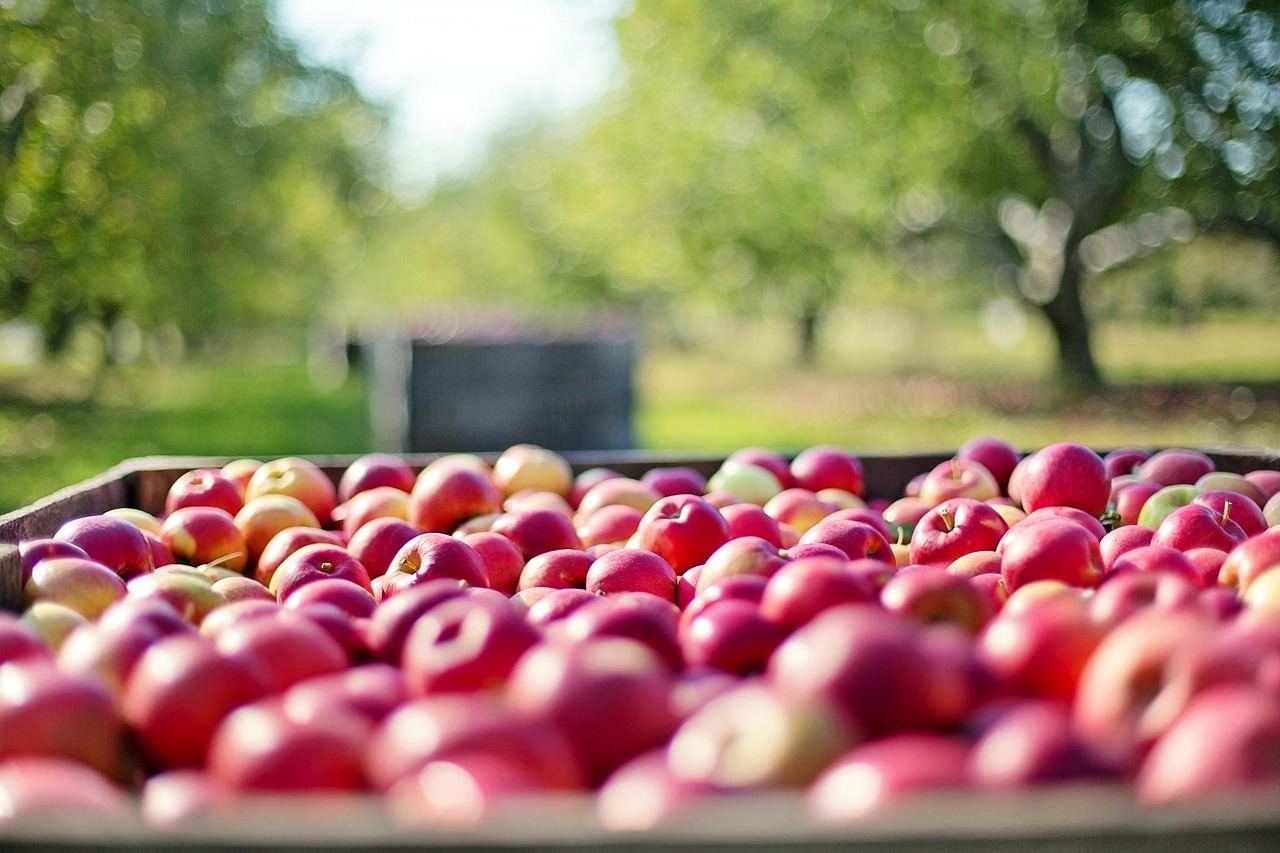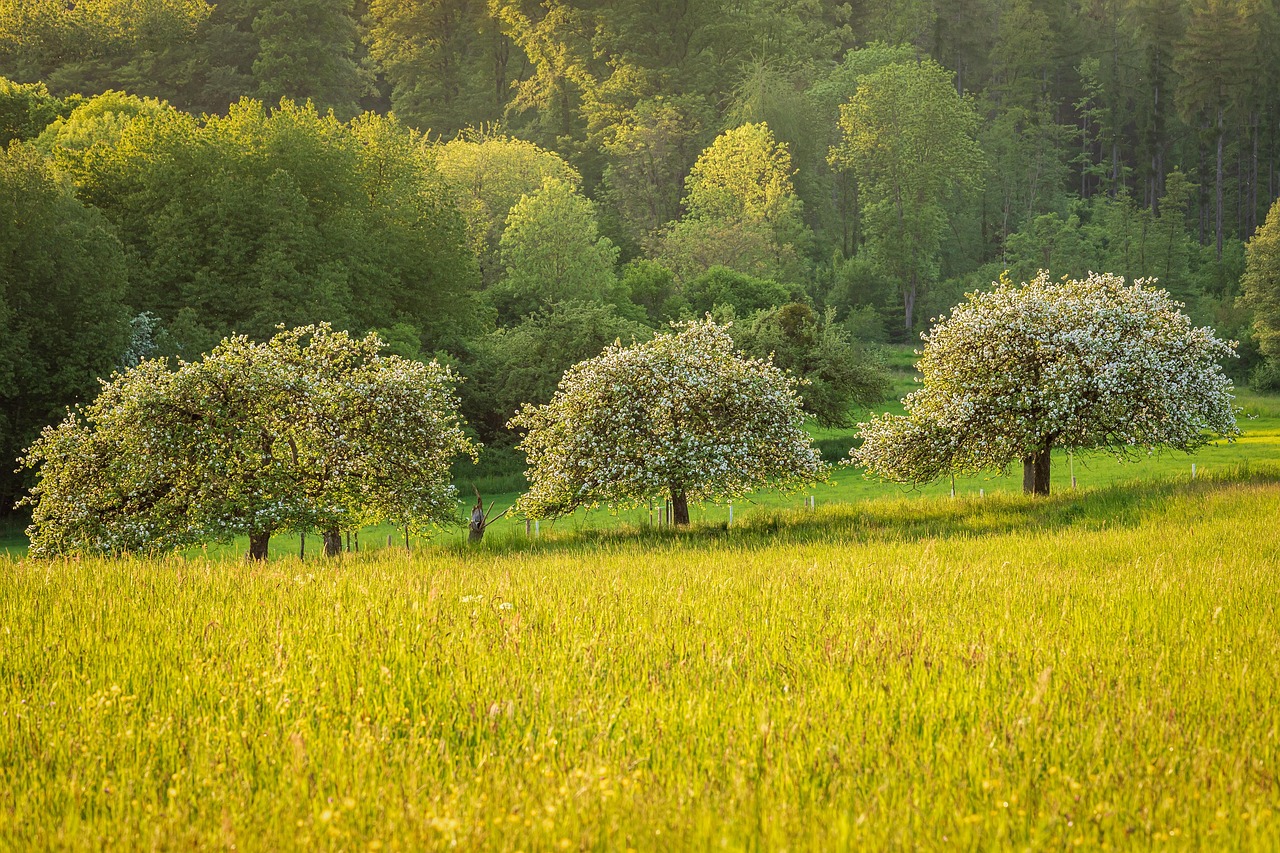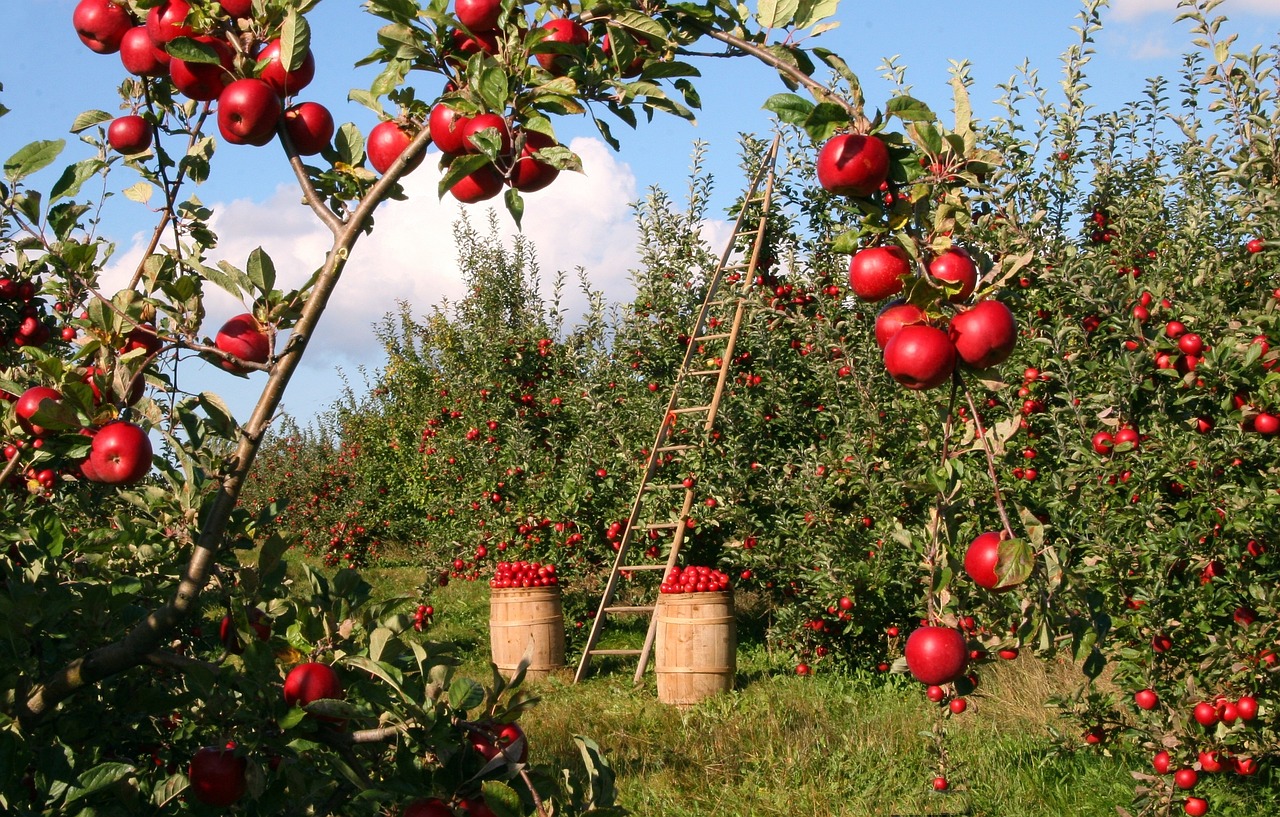Effective pruning for young and developing orchard trees promotes healthy growth, improves structure, and enhances fruit production. Proper techniques can lead to stronger trees that are more resilient to disease and environmental stresses.
Pruning is a critical agricultural practice for anyone involved in fruit tree cultivation. It involves selectively removing specific parts of a plant, such as branches or buds, to shape its growth and improve its overall health. For young and developing orchard trees, pruning is especially important. It sets the foundation for future growth and fruiting potential. By carefully managing the tree’s structure, you can encourage strong branches, enhance air circulation, and ensure adequate sunlight reaches all parts of the tree.

Understanding the principles behind effective pruning can make a significant difference in the long-term success of an orchard. Young trees require different pruning techniques compared to mature trees. This is because their structures are still forming, and improper pruning can lead to undesirable growth patterns or even damage the tree.
The Importance of Pruning Young Orchard Trees
When it comes to young orchard trees, several key benefits arise from effective pruning:
- Improved Air Circulation: Pruning helps reduce overcrowding of branches, allowing air to flow freely. Good air circulation reduces the risk of fungal diseases.
- Better Sunlight Penetration: Removing excess branches ensures that sunlight can reach all parts of the tree. This is crucial for photosynthesis.
- Stronger Structure: Pruning encourages a strong central leader and well-spaced branches. This structure supports heavier fruit loads in the future.
- Enhanced Fruit Quality: Trees that are pruned correctly often produce larger and better-quality fruit due to improved nutrient distribution.
Pruning also helps manage tree height and spread. This control is beneficial for harvesting and maintenance activities. Knowing when and how to prune young trees is essential for maximizing these benefits.

When to Prune Young Orchard Trees
The timing of pruning is crucial for achieving optimal results. Generally, young orchard trees should be pruned during their dormant season, which occurs in late winter or early spring before new growth begins. Pruning during dormancy minimizes stress on the tree and allows it to heal quickly as it enters its active growing season.
However, some light pruning can also be conducted during the growing season. This is often referred to as “summer pruning” and can help manage excessive growth or correct any issues that arise during the growing season. Care should be taken not to remove too much foliage, as this can hinder the tree’s ability to photosynthesize effectively.
Basic Pruning Techniques for Young Trees
There are several basic techniques that can be employed when pruning young orchard trees:

- Heading Back: This involves cutting back a branch to a bud or lateral branch. It encourages bushier growth.
- Thinning: Removing entire branches from the base helps improve air circulation and light penetration.
- Cleaning: This technique involves removing dead, damaged, or diseased wood. It helps maintain tree health.
- Shaping: This focuses on creating a desirable tree form by selectively removing branches.
Each technique serves a specific purpose and should be used based on the individual needs of the tree. Understanding these techniques is essential for effective pruning.
Tools Needed for Pruning
Having the right tools is important for effective pruning. Below is a list of essential tools for pruning young orchard trees:
- Hand Pruners: Ideal for small branches and delicate cuts.
- Loppers: Useful for cutting thicker branches that are too large for hand pruners.
- Saw: A pruning saw is necessary for larger branches that require more force to cut through.
- Gloves: Protect hands from cuts and scrapes.
- Ladder: For reaching higher branches safely.
Maintaining your tools is equally important. Sharp blades make clean cuts, which help minimize damage to the tree. Regularly inspect and sharpen your tools before starting your pruning work.

The practice of pruning young orchard trees lays the groundwork for healthy growth and fruitful harvests in the future. Understanding when, how, and with what tools to prune will help ensure that your trees thrive and produce abundantly as they mature.
Understanding Tree Growth Stages
To effectively prune young orchard trees, it is important to understand the different stages of tree growth. Each stage has unique characteristics and requirements, which influence how and when pruning should be performed. The primary growth stages include:
- Establishment Stage: This stage typically lasts for the first one to three years after planting. During this time, the focus is on developing a strong root system and establishing a healthy framework.
- Development Stage: Lasting from three to five years, trees begin to grow more rapidly. Pruning during this stage is crucial for shaping the tree and developing a strong canopy.
- Maturity Stage: From five years onward, trees enter their maturity phase. Pruning now focuses on maintaining health and optimizing fruit production.
Recognizing these growth stages can help orchardists tailor their pruning techniques to meet the needs of each tree, ensuring proper development and productivity.
Pruning Techniques for Each Growth Stage
The pruning techniques used will vary depending on the growth stage of the tree. Below are recommended methods for each stage:
Establishment Stage
During the establishment stage, the goal is to create a strong foundation for future growth. Recommended techniques include:
- Initial Training: Select a central leader and remove competing leaders. This establishes a dominant trunk.
- Removing Damaged Wood: Cut away any broken or damaged branches to promote healthy growth.
- Light Thinning: If branches are overcrowded, thin them out to ensure adequate sunlight reaches all parts of the tree.
Development Stage
As the tree transitions into the development stage, its structure becomes more complex. Here are techniques suitable for this stage:
- Shaping the Canopy: Begin to form a balanced canopy by selectively pruning branches that are growing inward or crossing one another.
- Encouraging Lateral Growth: Trim back the tips of dominant branches to encourage lateral branching and a fuller canopy.
- Regular Maintenance: Continue to remove dead or diseased wood as necessary.
Maturity Stage
In the maturity stage, the focus shifts toward maintaining tree health and optimizing fruit production. Key techniques include:
- Renewal Pruning: Remove older, unproductive branches to encourage new growth and fruiting wood.
- Thinning Fruit Clusters: Reduce the number of fruits on heavily laden branches to improve overall fruit size and quality.
- Seasonal Adjustments: Make adjustments each season based on tree performance and environmental conditions.
The Role of Pruning in Disease Management
Pruning plays an essential role in managing diseases in young orchard trees. By promoting good airflow and sunlight penetration, effective pruning helps reduce the incidence of fungal infections and pests. Here are some key practices:
- Remove Infected Wood: Any branches showing signs of disease should be removed immediately to prevent spread.
- Avoid Wounding Trees: Make clean cuts to minimize damage, as open wounds can attract pests and pathogens.
- Disinfect Tools: Regularly disinfect pruning tools to prevent transferring diseases from one tree to another.
Integrating these practices into your pruning routine can greatly enhance the overall health of your orchard trees.
Common Mistakes in Pruning Young Trees
Avoiding common mistakes can significantly improve pruning outcomes. Here are some pitfalls to watch out for:
- Over-Pruning: Removing too many branches can stress a young tree and hinder its growth. Always prune with moderation.
- Poor Timing: Pruning at the wrong time can damage new growth or expose the tree to disease. Adhere to seasonal guidelines.
- Ineffective Cuts: Making improper cuts can lead to uneven growth or create entry points for pests. Focus on clean cuts that facilitate healing.
Avoiding these mistakes will help ensure that your young orchard trees grow strong and healthy.
Monitoring Tree Health Post-Pruning
After pruning, ongoing monitoring is essential for ensuring the health of young trees. Key aspects to observe include:
- Growth Response: Watch how trees respond to pruning. Healthy trees should exhibit new growth within weeks.
- Pest Activity: Keep an eye out for pests that may exploit newly pruned areas. Take action as necessary to control infestations.
- Disease Symptoms: Be vigilant for any signs of disease following pruning, such as wilting leaves or discolored bark.
This vigilance can help you address potential issues promptly, supporting the long-term health of your orchard.
Seasonal Considerations for Pruning
Pruning is not just a one-time task; it requires careful consideration of seasonal changes. Each season offers unique opportunities and challenges for pruning young orchard trees. Understanding how to adapt your techniques based on the season can yield significant benefits for tree health and productivity.
Spring Pruning
Spring is a crucial time for pruning as trees begin to wake from dormancy. This season is ideal for several reasons:
- Timing of Cuts: Pruning in early spring allows you to remove any dead or damaged branches before the tree enters its vigorous growth phase.
- Observation of Growth: After winter, you can better assess which branches are alive and which need to be removed, as new buds will be visible.
- Encouraging Growth: Spring pruning can stimulate new growth and help shape the tree as it begins to leaf out.
However, be cautious not to prune too late in the spring, as this can interfere with flowering and fruit set. Aim for pruning before the buds begin to swell significantly.
Summer Pruning
Summer pruning is often recommended for managing tree size and maintaining structure. The benefits include:
- Controlling Growth: By removing excess foliage, you can redirect energy to developing fruit rather than excessive vegetative growth.
- Improving Sunlight Exposure: Thinning out leaves helps sunlight penetrate deeper into the canopy, enhancing fruit quality.
- Addressing Issues: Summer is an excellent time to correct any structural issues that may not have been apparent in spring.
Keep in mind that summer pruning should be done with care. Avoid excessive cutting, as this can lead to sunburned bark or stress on the tree.
Fall Pruning
Fall is typically not the best time for pruning young trees. However, some light maintenance can be beneficial:
- Removing Diseased Wood: If you notice any signs of disease or pest infestation, fall is a good time to remove those affected branches.
- Preparing for Winter: Light pruning can help prepare trees for winter by removing weak or overly long branches that may break under snow or ice.
Be careful with fall pruning, as it can stimulate new growth that may not have time to harden off before winter sets in, leading to potential damage from cold temperatures.
Winter Pruning
Winter is often regarded as the best time for pruning in many climates due to several advantages:
- Dormant Trees: Trees are dormant, making them less susceptible to stress from cuts.
- Easier Visibility: Without leaves, it is easier to see the structure of the tree and make informed decisions about which branches to prune.
- Reduced Disease Risk: Many diseases are inactive during cold months, reducing the risk of infections from pruning cuts.
However, be mindful of extremely cold temperatures. Wait until after the coldest days have passed to avoid damaging the trees.
Nutritional Considerations for Pruned Trees
Nutritional health plays a vital role in the recovery and growth of young orchard trees after pruning. Providing adequate nutrients supports new growth and overall tree vigor. Key nutritional factors include:
Soil Testing
Before applying fertilizers, it is critical to conduct soil tests. These tests provide insight into nutrient deficiencies or imbalances. Key elements to test for include:
- Nitrogen: Essential for growth and leaf development.
- Phosphorus: Important for root development and flowering.
- Potassium: Supports overall plant health and disease resistance.
Fertilization Strategies
Based on soil test results, you can develop an appropriate fertilization plan. Here are some strategies:
- Balanced Fertilizers: Use fertilizers that provide a balanced ratio of nitrogen, phosphorus, and potassium (N-P-K).
- Organic Options: Consider organic fertilizers such as compost or well-rotted manure, which can improve soil health over time.
- Timing of Application: Fertilize in early spring before new growth begins and again in late summer if necessary.
The Role of Mulching in Young Orchards
Mulching serves multiple purposes in young orchards and complements pruning efforts significantly. Here are some benefits of applying mulch:
- Moisture Retention: Mulch helps retain soil moisture, reducing the need for frequent watering.
- Weed Suppression: A layer of mulch prevents weeds from competing with young trees for nutrients and water.
- Soil Temperature Regulation: Mulch insulates the soil, helping to maintain a stable temperature which benefits root development.
Select organic mulches like wood chips or straw, which will decompose over time, enriching the soil with nutrients. Apply mulch around the base of each tree while keeping it away from the trunk to prevent rot.
The combination of seasonal awareness, nutritional strategies, and mulching techniques will significantly enhance the effectiveness of your pruning practices and contribute to healthy, productive young orchard trees.
Additional Strategies for Successful Orchard Management
In addition to effective pruning, several strategies can further enhance the health and productivity of young and developing orchard trees. This holistic approach ensures that trees not only survive but thrive in their environment.
Integrated Pest Management (IPM)
Implementing an Integrated Pest Management (IPM) strategy is essential for maintaining the health of orchard trees. IPM combines various management practices to minimize pest damage while reducing reliance on chemical pesticides. Key components of an IPM strategy include:
- Regular Monitoring: Frequent inspections of trees can help identify early signs of pest infestations or disease outbreaks.
- Biological Controls: Introduce beneficial insects that prey on harmful pests, such as ladybugs that consume aphids.
- Mechanical Controls: Use physical barriers, like row covers or sticky traps, to prevent pests from reaching the trees.
- Cultural Practices: Rotate crops, manage irrigation, and maintain tree health to reduce pest habitats.
By integrating these practices, orchardists can manage pests effectively while promoting a balanced ecosystem within their orchards.
Water Management Techniques
Water management is vital for the growth and development of young orchard trees. Inadequate or excessive watering can lead to problems such as root rot or drought stress. Effective water management strategies include:
- Drip Irrigation: This method delivers water directly to the root zone, minimizing waste and ensuring efficient hydration.
- Soil Moisture Monitoring: Utilize soil moisture sensors to determine when trees need watering, preventing over- or under-watering.
- Mulching: As mentioned previously, applying mulch retains moisture and regulates temperature, creating a healthier root environment.
Proper water management not only supports tree growth but also influences fruit quality and yield.
Education and Continuous Learning
The field of horticulture is constantly evolving. Staying informed about the latest research and best practices in orchard management is crucial for success. Consider the following approaches:
- Workshops and Courses: Attend educational workshops focused on fruit tree care, pruning techniques, and pest management.
- Networking with Other Growers: Exchange experiences and tips with other orchardists to learn from their successes and challenges.
- Research Publications: Read journals and articles related to horticulture to keep up-to-date with innovative practices and findings.
Investing in education can empower orchardists to make informed decisions that enhance tree health and orchard productivity.
Final Thoughts
Effective pruning for young and developing orchard trees is a multifaceted process that requires attention to detail, a solid understanding of tree growth stages, and awareness of seasonal factors. By employing the right techniques at the appropriate times, you can shape healthy trees that are capable of producing high-quality fruit.
The integration of nutritional strategies, mulching practices, and water management techniques can significantly contribute to tree vitality. Additionally, adopting an Integrated Pest Management approach will safeguard your orchard from potential threats while promoting ecological balance.
Continued education and community engagement are vital for staying ahead in the field of orchard management. By remaining open to new ideas and practices, you can continuously improve your techniques, ensuring that your orchard remains productive for years to come.
In summary, successful orchard care involves more than just pruning; it encompasses a comprehensive understanding of tree health management, environmental factors, and ongoing education. With dedication and informed practices, you can cultivate a thriving orchard that yields abundant fruit harvests.
